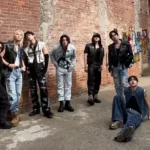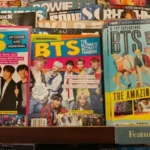An interesting tweet has highlighted that four Korean idol groups—Stray Kids, Ateez, Enhypen, and Tomorrow X Together—have made it into the top ten of U.S. album sales so far this year. This news has generated joy and astonishment within the Korean community, with some fans debating their specific rankings. The success of K-pop in the U.S., particularly after Psy’s “Gangnam Style” and BTS’s achievements, underscores the significant role of social media platforms like YouTube in expanding the genre’s global reach.
Significant Sales Figures for Korean Idol Groups
An intriguing tweet has been circulating within the Korean community, sharing a list compiled by Chart Data of the top-selling artists in the U.S. so far this year. Notably, four Korean idol groups have made it into the top ten: Stray Kids at 2nd place, Ateez at 5th, Enhypen at 6th, and Tomorrow X Together at 8th.
This news has been met with joy among members of the Korean community. While internet users familiar with the U.S. market are less surprised, many Korean netizens are astonished by the popularity of Korean idols in the U.S. Fans of these groups are comparing their rankings, with some expressing dissatisfaction over Tomorrow X Together’s lower position. However, any criticism was quickly countered with the argument that Tomorrow X Together’s strong domestic fandom has ensured success both in the Korean and international markets. The mere fact of being in the top ten of U.S. album sales is a remarkable achievement.
The Birth of K-Pop’s U.S. Popularity
The initial breakthrough for K-pop in the U.S. market came on July 15, 2012, when YG Entertainment uploaded Psy’s new music video, “Gangnam Style,” to its YouTube channel. Prior to this, Korean artists had made various efforts to enter the U.S. market but with little success. Yet, Psy, an artist who was neither a typical idol nor had a foreign fanbase, achieved unprecedented popularity with his music video, which was originally intended as a comedic piece for domestic fans.
Two months later, “Gangnam Style” topped the iTunes charts and became the first Korean song to reach 64th place on the Billboard Hot 100, eventually climbing to 2nd place by the end of September. It also became the first video to surpass one billion views on YouTube.
BTS and the Expansion of K-Pop
Since 2018, BTS has garnered significant acclaim in the U.S. market. By the time of their “FAKE LOVE” promotions, BTS had achieved several milestones, including becoming the first Asian artist and the first foreign-language album in twelve years to top the Billboard 200. They also reached 10th place on the Hot 100, a record second only to Psy’s “Gangnam Style.” BTS’s success in Western markets demonstrated that their popularity was not merely a fleeting phenomenon. U.S. media began referring to them as “the most popular boy band in the world.” They were invited to major awards shows and events and conducted a stadium-sized world tour in 2018, becoming the first Asian artists to sell out all their shows.
The Role of Social Media in K-Pop’s Success
The success of K-pop can be attributed in large part to social media, with YouTube emerging as a central platform for its global expansion. As fans worldwide shared videos on social media, YouTube’s influence on the music industry grew. The popularity of singing and dancing videos on YouTube made it an ideal platform for K-pop content.
Most Korean entertainment agencies established official YouTube channels and uploaded their music videos, allowing their content to rapidly reach international fans without the need for physical travel. Over the past decade, YouTube and social media have produced results far exceeding the efforts of previous foreign market expansion attempts.
K-Pop’s Invasion and Media Comparisons
In the U.S. media, terms such as “Korean Invasion” and “K-Pop Invasion” have been used to describe this phenomenon, drawing a parallel to the British Invasion of the 1960s when British bands like The Beatles and The Rolling Stones dominated the American music scene. Some argue that K-pop journalists primarily use these terms, but the comparison has gained more credibility as even broadcast media have featured shows comparing K-pop to The Beatles. This phenomenon is no longer seen as mere exaggeration.


I appreciate you taking the time to read this post. Please share your thoughts in the comments!



I’m a total noob when it comes to K-pop besides BTS and BP. Mind blown that it’s huge in the US. Any idea which states are the biggest K-pop hubs?